If you are a camping fan, you’ve probably come across the terms campfire and bonfire. But do they mean the same thing? While they’re similar, there are some key outstanding differences between them. Follow our campfire vs. bonfire guide for more insights on the two.
What is a Campfire

Fig 1: Friends roasting marshmallows on a campfire
A campfire is a small fire relative to a bonfire. It would be best if you also had a fire ring or firepit to create a campfire, which is unnecessary for a bonfire.
Besides, you don’t necessarily require extensive space or permission from the authorities to set up a campfire. But, concerning the licenses, there are variations from place to place, so you need to consult your local authorities.
Campfire History
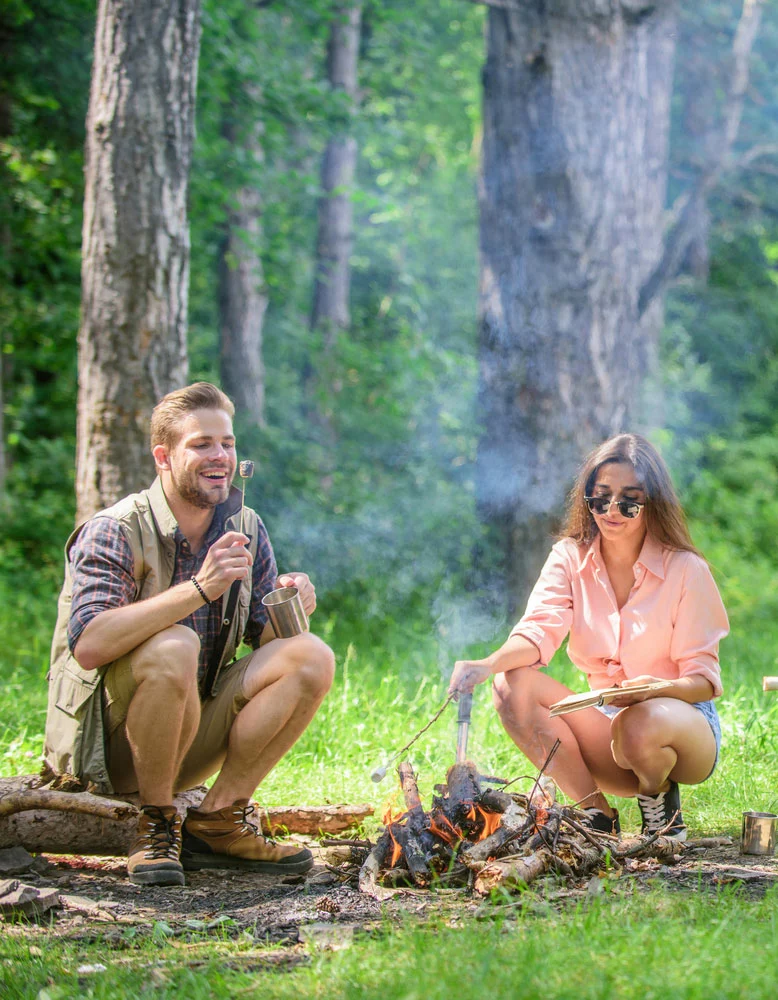
Fig 2: Campers using a campfire
The earliest campfires in human civilization dating back to South Africa 1.6 million years ago. At the time, campfires supported the livelihoods of humans.
They have since spread to various world parts, and today, a camping expedition is not complete without a campfire.
Campfire Uses
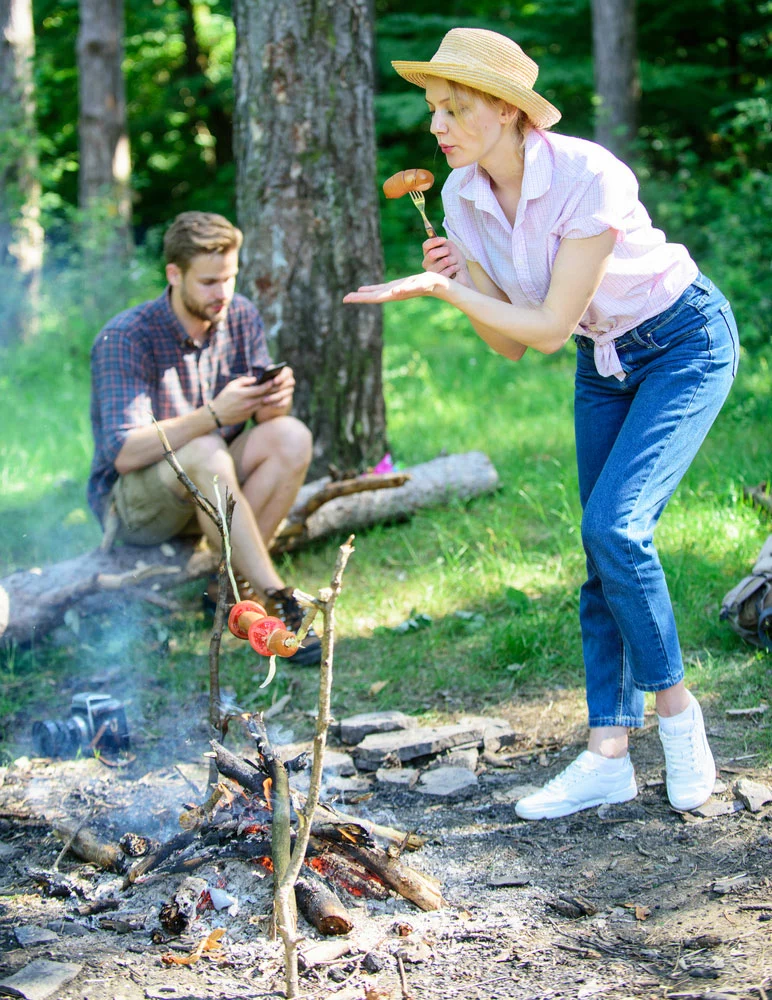
Fig 3: Campfires are useful for cooking, warming up, and lighting the surroundings while camping.
Campfires are helpful for the following uses during camping:
- Giving light to improve the visibility of the surrounding
- Keeping insects and wild animals at bay while camping
- Warming the campers
- Campfires also act as signals as they are visible from afar
- Cooking meals
How to Build a Campfire?
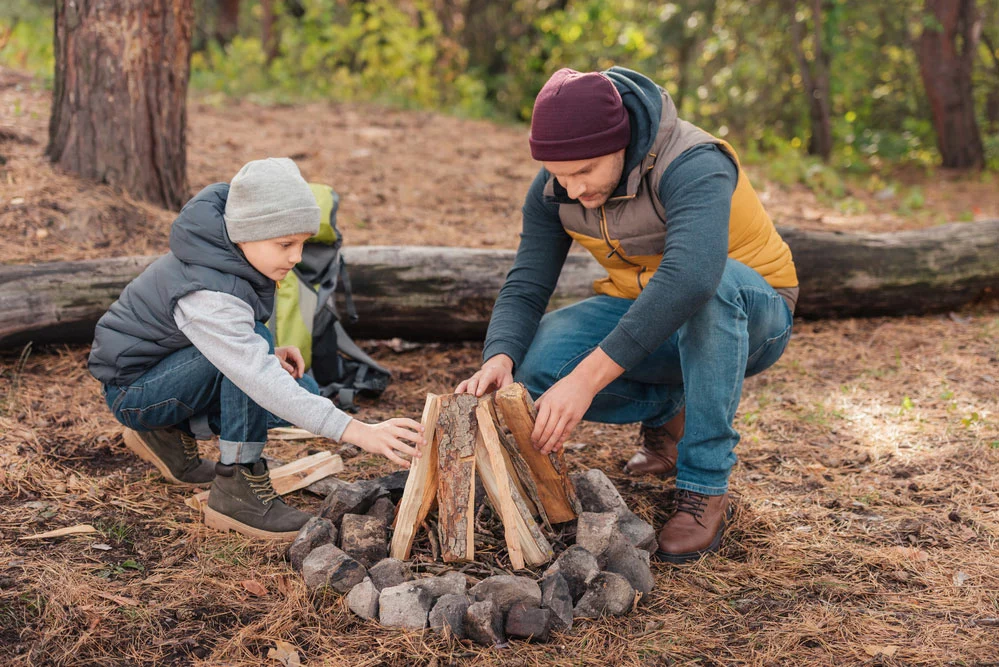
Fig 4: Setting Up a Campfire
Anyone can build a campfire. However, it would help if you undertook fundamental fire safety precautions. For instance, you shouldn’t make a campfire near a tent, trees, or anything that can easily catch fire.
Here are the exquisite details about building a campfire in a typical campsite.
Make a fire ring
First, you need to build a fire ring in these three steps.
- Collect large stones and arrange them to form a circle around the area you intend to build a campfire.
- Next, dig a hole inside the enclosure. It should measure about 2-3 feet in diameter and 5-6 inches in depth.
- Also, it would help if you cleared the area surrounding your fire ring. Ensure there is no scrub, debris, or flammable materials in the fire ring’s vicinity.
Build the Campfire

Fig 5: A Family Making a Campfire
Once your fire ring is ready, you can now build the campfire. Assemble the following materials to get you started:
- Tinder– These are light materials that easily catch fire. They include wood shavings, sawdust, paper, and twigs.
- Any Firestarters such as lighter or match
- Kindling- These small sticks will catch fire from the fuel and pass it to firewood.
- Firewood- Lastly, you’ll need dry fuelwood for the actual campfire. You can use Ash firewood, elm, hickory, or any wood that is ideal for fires.
Light up the Campfire
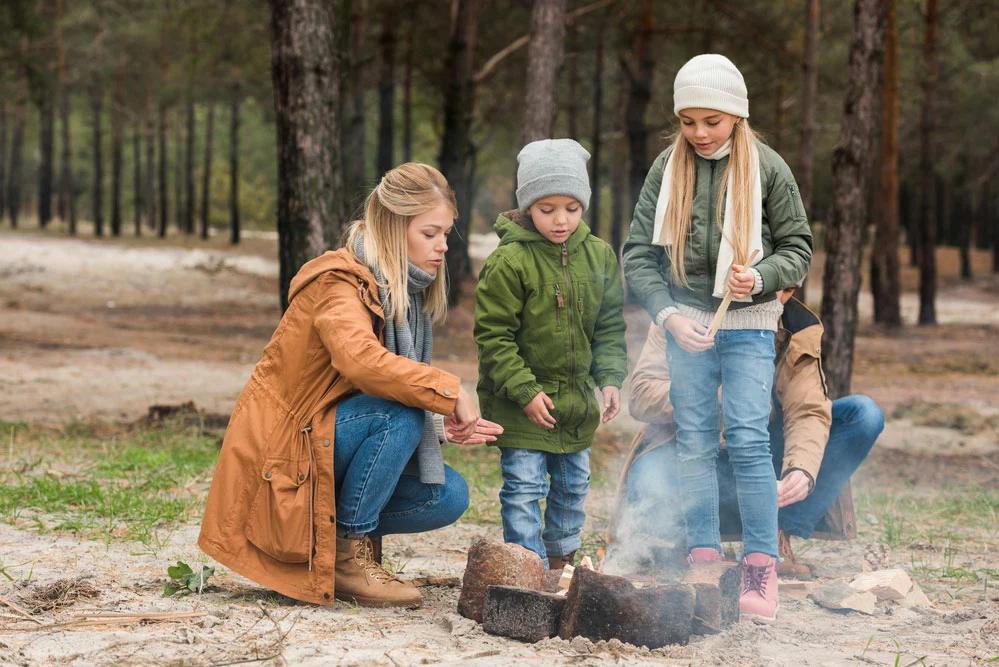
Fig 6: Using a campfire to cook
The last step involves getting the campfire burning. Again, this is simple, and you’ll need to follow the following steps.
- Using your match or lighter, light the tinders.
- Add the kindling slowly until it catches fire from the tinders.
- Lastly, slowly add the firewood on top of the kindling till its catches fire.
What is a Bonfire?
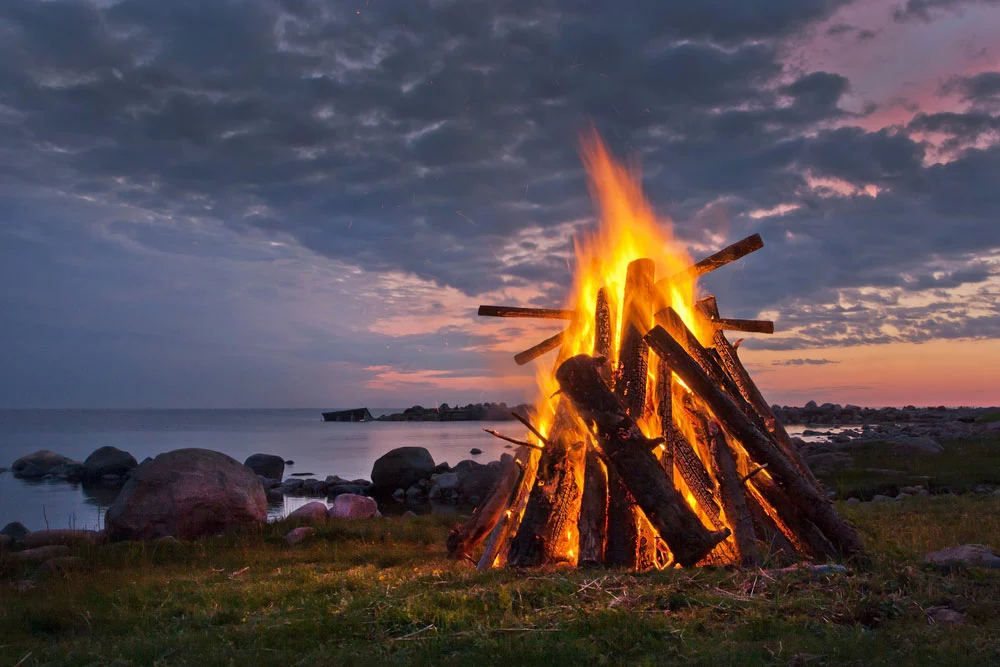
Fig 7: A Bonfire
Compared to a campfire, a bonfire is enormous and primarily synonymous with events and celebration scenarios. Also, you’ll find bonfires at festivals and parties, which have a more profound symbolic meaning than a campfire.
In layperson’s terms, a bonfire is an explicit or bigger campfire; thus, you need to be more careful with bonfires. It can raze an extensive area if it gets out of hand, unlike a campfire which is mostly under control.
Finally, while you don’t need authorities’ permission to start a campfire, it is mandatory for bonfires, given their large size.
Bonfire History
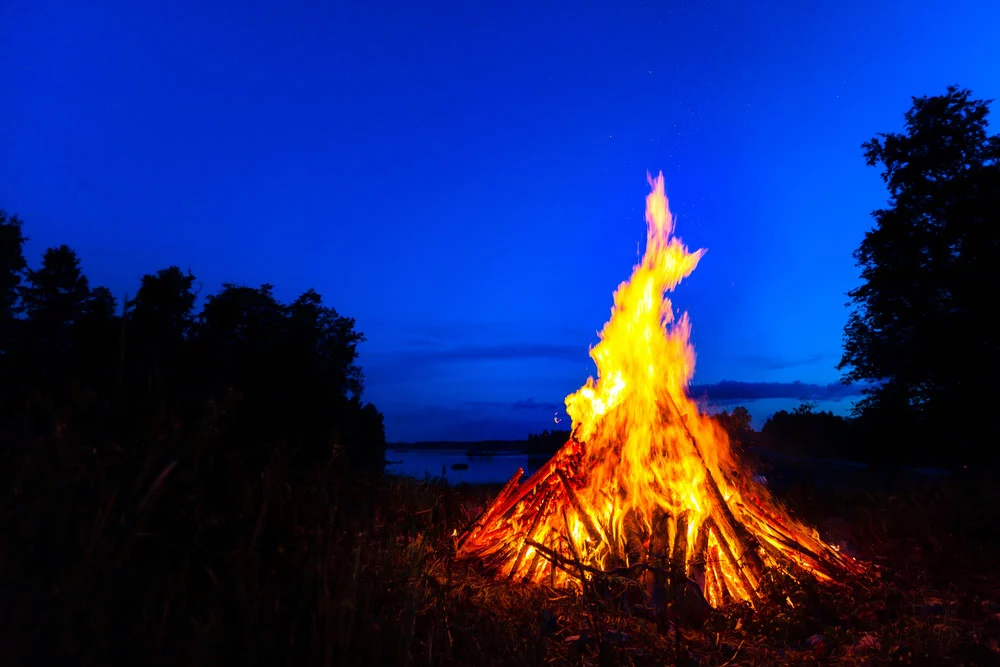
Fig 8: A Bonfire at night
Traditionally, the Celts would make large fires containing bone piles to keep wild spirits off. It is the cardinal origin of its name.
Nonetheless, we’ve had different versions of bonfires across different cultures. For instance, bonfires are common in the US during Independence Day celebrations.
Bonfire Uses
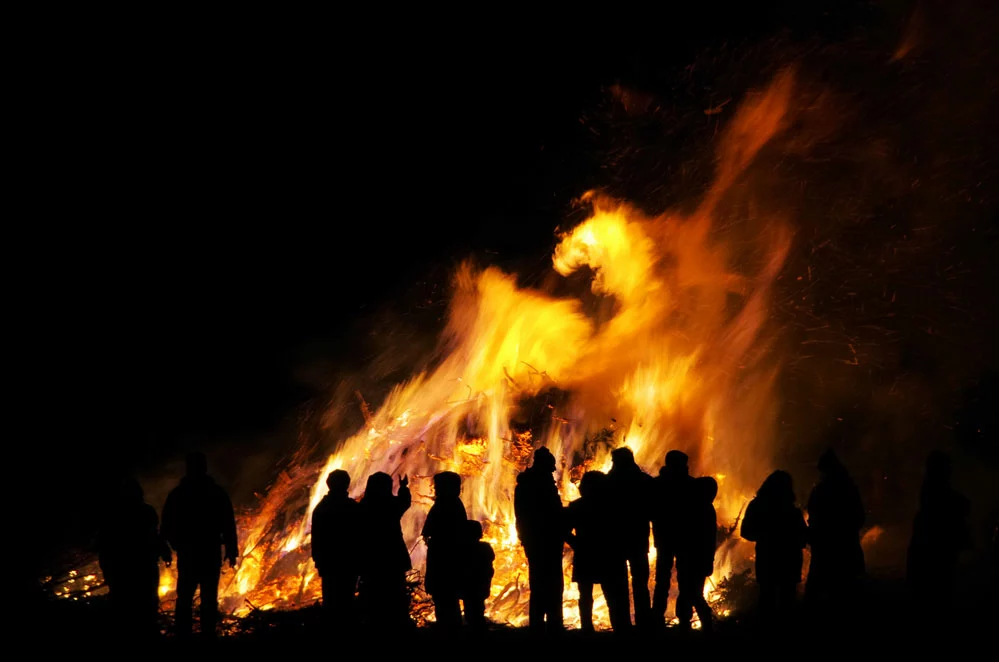
Fig 9: People in a bonfire
Fundamentally, we associate bonfires with celebrations rather than simple uses such as cooking and warming, as in the case of campfires.
Fire in many conventional cultures has an association with cleansing. Hence, in most traditional societies, bonfires were useful in cleansing rituals. Even today, some Asianic cultures (such as Indians) place great importance on bonfires as they regard fire as a cleaner.
Nonetheless, in the contemporary world, bonfires are not profoundly symbolic and are essentially useful in celebrations and parties. Thus, you’ll also find loud music playing and people dancing around bonfires.
How to Build a Bonfire
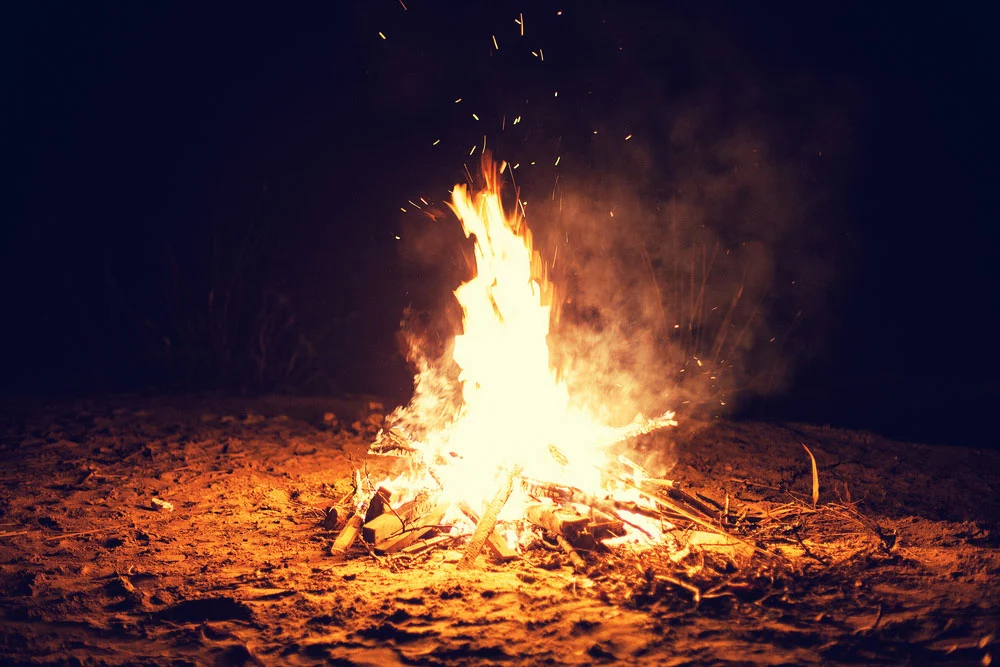
Fig10: A bonfire
The steps to building a bonfire are similar to those of a campfire (we’ve highlighted above). Hence, in a nutshell, you need to prepare the area, collect firewood, kindling, and fuel, and light the fire.
But, there are some key exceptions to creating a bonfire.
- For instance, you need a more extensive area with more space. Thus, more than a simple fire pit is needed to fit an ideal bonfire.
- Besides, you must settle on a safe site with no risk of spreading the fire to vegetation or property.
- Lastly, since a bonfire is larger than a campfire, you’ll also need more firewood. A bonfire-size flame requires wood that burns for a long time; thus, logs fare better than small firewood. But you can still use ordinary firewood though you need plenty to keep it burning.
Campfire vs. Bonfire: Key Safety Factors.
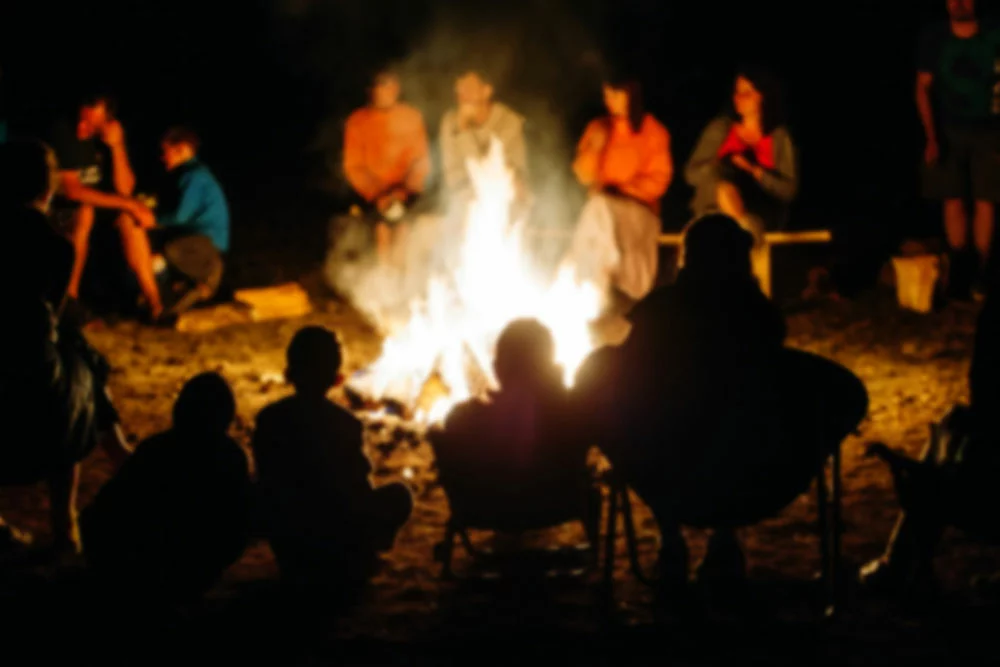
Fig 11: people surrounding a bonfire
Any open fire (either bonfire or campfire) can be fatal if handled carelessly. Therefore, you must undertake some safety measures when dealing with bonfires and campfires.
Campfire vs. Bonfire: Take heed of the weather warning.
What does the weather service say about the weather that could affect fire?
If the local weatherman predicts abnormally hot temperatures, don’t set bonfires in that locale. Also, if you live in a place with a high propensity for wildfires, refrain from making open fires. Remember, fire accidents can be challenging to contain.
Campfire vs. Bonfire: Avoid Open Fires in Dry Air Conditions.
If you expect dry weather, you shouldn’t set a bonfire or campfire as fire spreads rapidly in the less humid air. If it’s windy, restrain setting a bonfire as it is prone to causing a fire outbreak.
Campfire vs. Bonfire: Additional Precautions
Besides the above precautions, there are several other vital rules that you should always uphold when operating outside fires, such as campfires and bonfires.
- First, you must never leave a fire unattended.
- Also, never leave a bonfire without covering it when you’re not around.
- In addition, you must never build a bonfire near a tree or building as you’re predisposing them to catch fire.
- Furthermore, wear tightly fitting and controllable clothes near a bonfire or campfire. Avoid those that are most likely to catch fire.
- Lastly, make the local authorities aware whenever you want to set up a bonfire. You may not require licensing to start a campfire, but it is crucial to inform the authorities.
Conclusion
We’ve provided you with the critical differences between bonfires and campfires. We’ve further educated you on how to start each of the separate open fires and the precautions you should undertake for each of them. Contact us for further information on the two.
